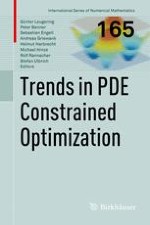2014 | OriginalPaper | Buchkapitel
Optimal Control of Elastoplastic Processes: Analysis, Algorithms, Numerical Analysis and Applications
verfasst von : Roland Herzog, Christian Meyer, Gerd Wachsmuth
Erschienen in: Trends in PDE Constrained Optimization
Aktivieren Sie unsere intelligente Suche, um passende Fachinhalte oder Patente zu finden.
Wählen Sie Textabschnitte aus um mit Künstlicher Intelligenz passenden Patente zu finden. powered by
Markieren Sie Textabschnitte, um KI-gestützt weitere passende Inhalte zu finden. powered by
